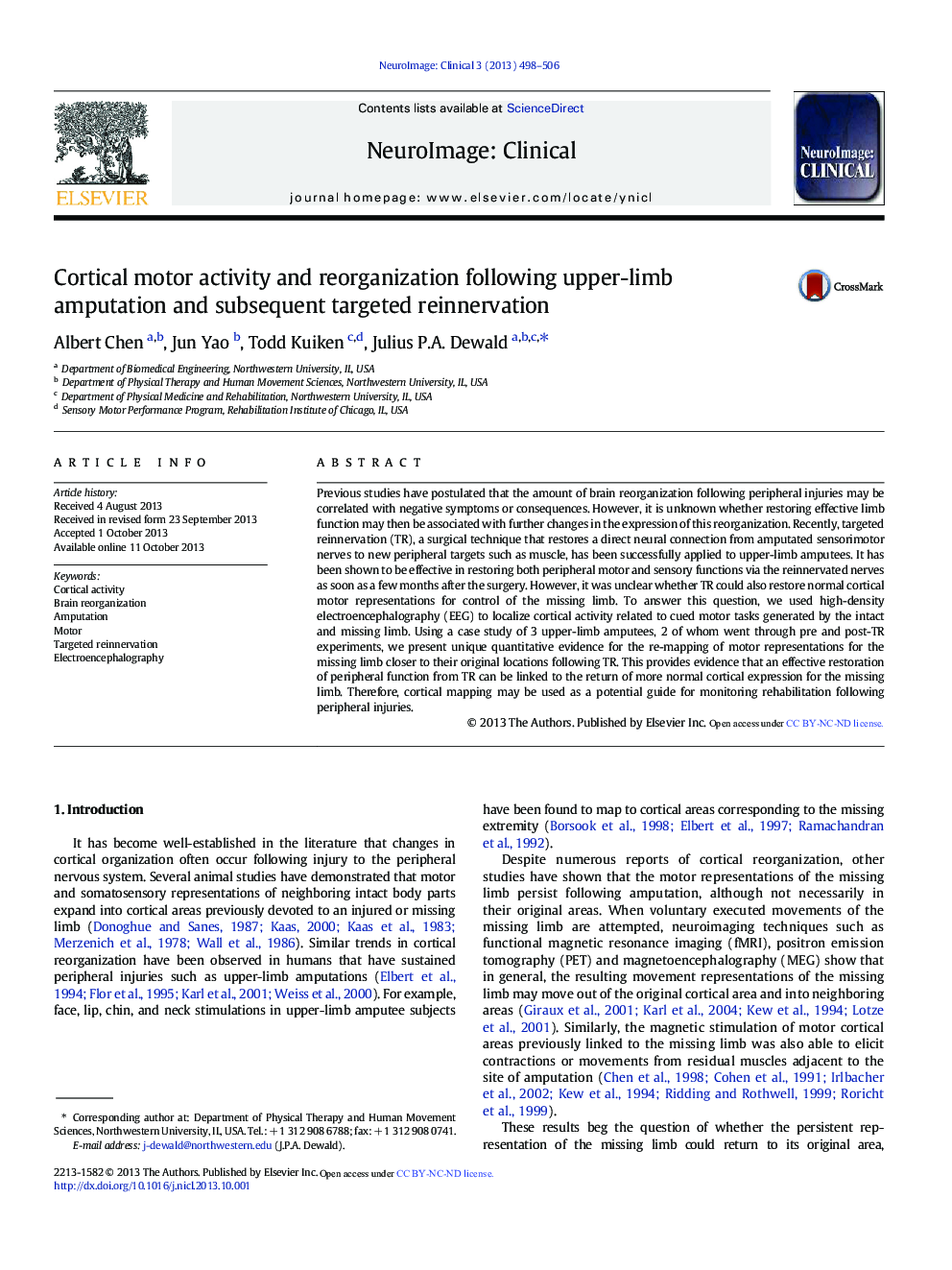| Article ID | Journal | Published Year | Pages | File Type |
|---|---|---|---|---|
| 3075420 | NeuroImage: Clinical | 2013 | 9 Pages |
•High-density EEG during cued motor tasks in upper-limb amputees was recorded.•Two subjects were evaluated before and after targeted reinnervation (TR).•Motor representations were determined for both the intact and missing limbs.•Missing limb representations moved closer to presumed original locations post-TR.•Regaining peripheral function may be linked to return of normal cortical expression.
Previous studies have postulated that the amount of brain reorganization following peripheral injuries may be correlated with negative symptoms or consequences. However, it is unknown whether restoring effective limb function may then be associated with further changes in the expression of this reorganization. Recently, targeted reinnervation (TR), a surgical technique that restores a direct neural connection from amputated sensorimotor nerves to new peripheral targets such as muscle, has been successfully applied to upper-limb amputees. It has been shown to be effective in restoring both peripheral motor and sensory functions via the reinnervated nerves as soon as a few months after the surgery. However, it was unclear whether TR could also restore normal cortical motor representations for control of the missing limb. To answer this question, we used high-density electroencephalography (EEG) to localize cortical activity related to cued motor tasks generated by the intact and missing limb. Using a case study of 3 upper-limb amputees, 2 of whom went through pre and post-TR experiments, we present unique quantitative evidence for the re-mapping of motor representations for the missing limb closer to their original locations following TR. This provides evidence that an effective restoration of peripheral function from TR can be linked to the return of more normal cortical expression for the missing limb. Therefore, cortical mapping may be used as a potential guide for monitoring rehabilitation following peripheral injuries.
